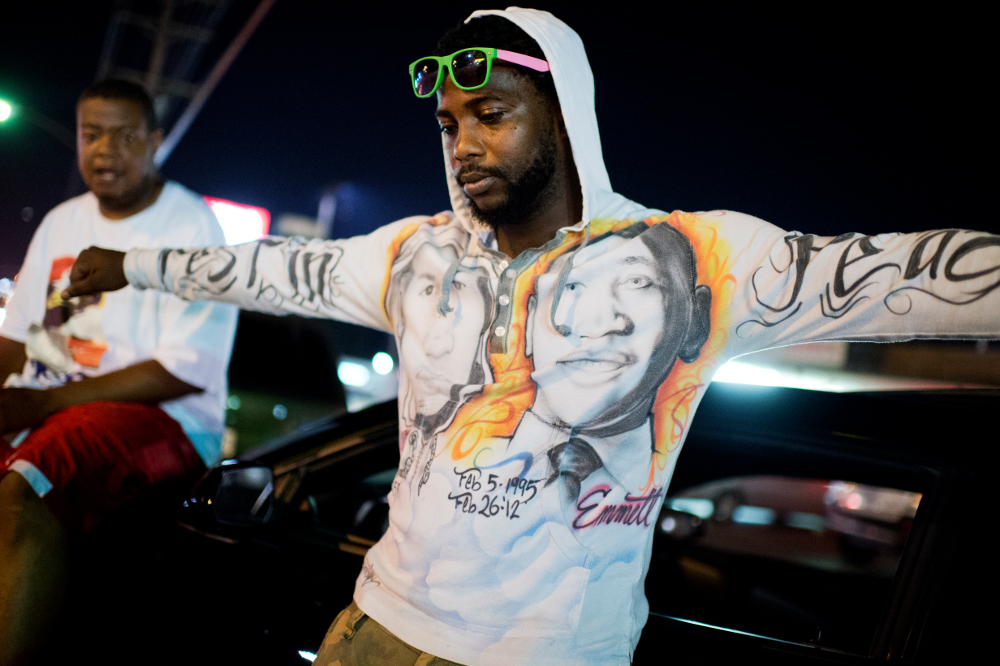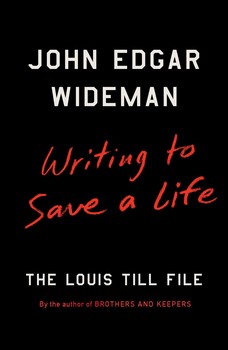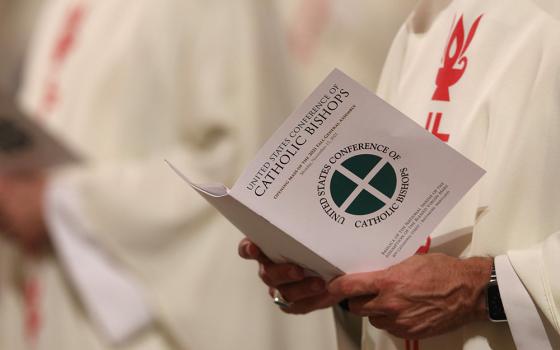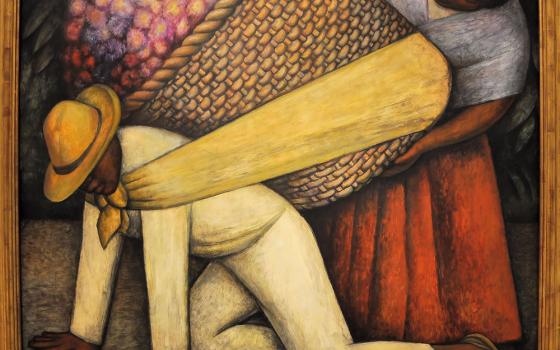
A man shows off his shirt with images of Trayvon Martin and Emmett Till in Ferguson, Missouri, Aug. 14, 2014, during a demonstration protesting the police shooting death of Michael Brown. (Newscom/CQ Roll Call/Tom Williams)

In 1955, two armed men broke into Moses Wright’s home and demanded that he give them his great-nephew, Emmett Till. The actions that followed have haunted the American conscience for six decades and served as a key spark of the 1950s and 1960s civil rights movement. Now, award-winning writer John Edgar Wideman approaches those actions from a wholly new perspective.
The story is about as gruesome and appalling as any in our nation’s history. Fourteen-year-old Chicago area resident Emmett Till went south to Money, Mississippi, in 1955, to spend part of the summer with relatives. He bought some candy in a local store, and the proprietor, a young white married woman named Carolyn Bryant, accused him of trying to sexually assault her when she completed the transaction. No one other than Bryant and Till was present in the store to witness what happened, and Bryant later confessed that she had invented the attack.
Days after the accusation, her husband and brother-in-law kidnapped Till from his great-uncle and great-aunt’s house in the middle of the night, tortured him, shot him in the head, and then dumped his body in the Tallahatchie River. Both men admitted to abducting Till but insisted at trial that they had returned him safely to his great-uncle’s home later that night. A young boy found Till’s body in the river, and authorities tried to bury him before evidence of his torture could be revealed. His mother insisted that she take Emmett back to Chicago for an open-casket viewing. Jet Magazine published a photo of his badly beaten head — an image so gruesome that it outraged and galvanized much of the nation.
It did not impact the all-white jury, which found Roy Bryant and J.W. Milam innocent of Till’s murder. Both men later admitted in a national publication to killing Till because they found the young boy’s self-confidence and refusal to adopt racial deference threatening to their strong belief in white supremacy.
Wideman approaches this story from an original angle. At the core, the book is his investigation into the life and death of Emmett Till’s father, Louis Till. The U.S. Army executed Private Louis Till in Italy in 1945, after finding him guilty of rape and murder. Wideman succeeds in casting serious doubt on the Army’s case and motives. Wideman suggests that, like his son, Emmett, Louis Till may have been murdered by powerful whites for his refusal to submit to the racial oppression that suffused American society generally and life in the Army in particular.
Wideman explores the Till family struggles in a deeply personal way, as he sees strong parallels between the Tills’ experiences and his own. Wideman first saw the photo of Emmett Till’s corpse when he, too, was only 14, and it shook him to his core. So, too, does the story of Till’s family, as Wideman explains that his own father, like Emmett’s father, Louis, was mostly absent from the family and sometimes violent toward his wife when present. Wideman wants desperately to understand both fathers, as this understanding might convey a dignity absent from the cursory summaries of their lives, and to shed light on the darkness that separates black fathers from their sons.
The Army maintained a record of Louis Till’s case, and that file’s flaws and how it was used raise questions that Wideman poses but cannot answer. Why did Wideman need to file a Freedom of Information Act request to obtain the confidential file seven decades after the Army compiled it, but local Mississippi defense attorneys were able to get a copy readily in 1955? Getting it so quickly allowed them to undermine federal efforts to file civil rights violation charges against Bryant and Milam after their exonerations in state court. Information about Louis Till’s rape convictions effectively ended efforts to pursue justice for his son, who, after all, had also been accused of attempted rape.
Advertisement
Wideman points out troubling aspects of Louis Till’s conviction. Perhaps most significant was the context of racism within the military. Fully 90 percent of all American soldiers accused of rape in France in the months following D-Day were African-American, and Wideman found that so, too, were 86 percent of those executed for capital crimes and buried near Louis Till.
Moreover, Army prosecutors complied with Dwight Eisenhower’s insistence that they resolve capital cases quickly. Did white Army prosecutors do so by targeting African-American soldiers? The Italian victims’ testimony upon which prosecutors rested their case against Louis Till contained critical contradictions in some places and language so idiomatically American in others that it seemed coached.
For example, the rape victims testified that three men broke into their home and raped two women, while Army prosecutors insisted that four men had done so. One witness to the murder claimed first that one of the two perpetrators was white, but insisted at trial that both were black. The rape victims testified that it was too dark to see the rapists’ skin color and could not identify the defendants in the courtroom, but later they described the color of their clothing precisely and insisted that one was interracial. Wideman cannot reach firm conclusions about Louis Till’s innocence or guilt, but finds the case against him to be far too weak to impose the death penalty. Moreover, Till’s file contains no record of his testimony about his actions that night — he apparently did not testify in his own defense.
Was Louis Till guilty? Wideman never resolves this question, and this clearly frustrates him. But that question may have been secondary to his primary aim to “make sense out of the American darkness that disconnects colored fathers from sons, a darkness in which sons and fathers lose track of one another.” That darkness is the oppressive economic, legal and social milieu that racism imposes on African-American men and boys.
Fighting this force, finding footing in its midst — even, as in the Till cases, living to mature manhood, proves incredibly stressful and elusive. Black men live precariously in American society. Wideman writes “to save a life,” to connect, to validate, to know, to dignify.
Sometimes that darkness lightens a bit, and we think hope is reasonable, that we have escaped history’s grasp. And then there is Charlottesville, and a president who seems to be deepening the darkness.
[Timothy Kelly is department chair and professor of history at St. Vincent College in Latrobe, Pennsylvania.]








